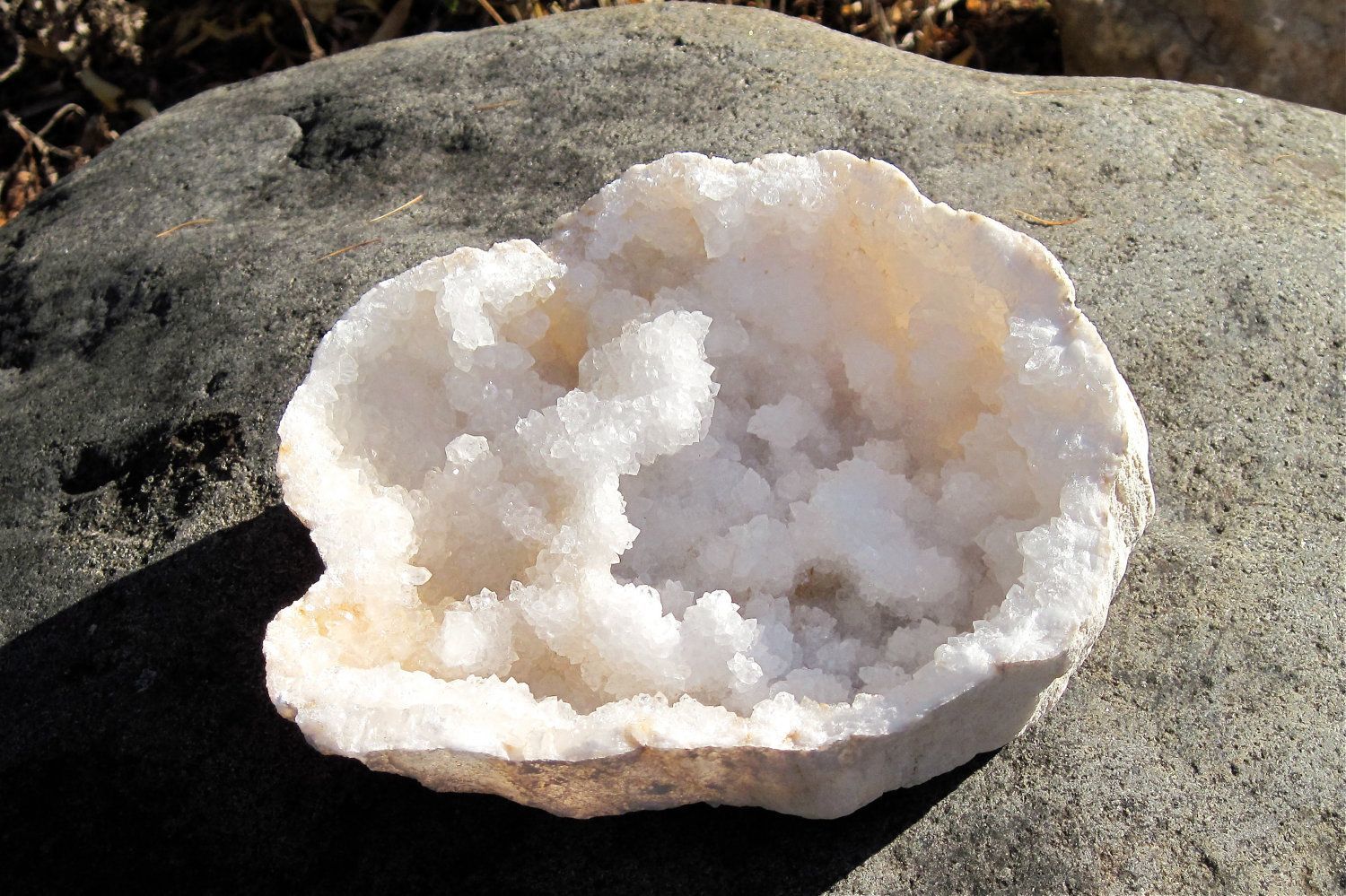What are geodes?
Geodes are spherical to subspherical rock structures with an internal cavity lined with mineral materials. They have a durable outer wall that is more resistant to weathering than the surrounding bedrock. This allows the geode to survive intact when the surrounding bedrock weathers away.

What are volcanic geodes?
Volcanic geodes are the most widely known and sought after geodes and are formed as the outcomes of volcanic eruptions. Magma that erupts from volcanoes contains a significantly high percentage of dissolved gas with an incredible amount of weight. As the lava rises to the surface, the gas expands in proportion to the pressure reduction, and while most of it escapes, some of it gets trapped in the lava. This leads to the creation of voids or gaps in the lava. Similar voids are also created as liquid lava flows out from partially solidified lava, producing small lava tubes. Hydrothermal water or groundwater erodes and delivers minerals like opal, agate, quartz, and others, which accumulate in the voids of solidified basaltic lava flows. Over time, these mineral deposits in long lava tubes develop into some of the largest and longest geodes. Many of these have the geometry of long tree branches, having a diameter of a meter and stretching several meters in length.
What are sedimentary geodes?
Sedimentary geodes are normally found in dolomites, limestone and calcareous shale. In this case, voids open up as roots, shells, tree branches, and other organic material decay. Gas fills up in these voids that are later deposited with minerals such as agate, quartz, opal or carbonate materials, paving the way for the formation of sedimentary geodes. Sedimentary geodes are typically smaller than volcanic geodes. These geodes are easily found when the host rock is weathered away. The host rock is normally formed by limestone, dolomites, basalt, and shale, which tend to weather away easily, carrying the outer layer composed of quartz, chalcedony or other geode forming minerals.
Minerals commonly found in geodes:

Amethyst is discovered in the form of thousands of smaller crystals in huge and hollow geodes known as cathedral geodes. It ranges in color from a light violet pink to deep purple.

Calcite is the most abundantly found mineral in Iowa. It is the major mineral found in geodes composed of the host rock limestone. Dolostone that contains 50% of the mineral dolomite, also contains calcite crystals. Its color is white.
Logging Tasks:
- At the GZ look at the building stone. You should observe geode crystals in the rock. What is the size, texture, and appearance of the geodes?
- Using information you’ve learned in the description would you consider the geodes in Downtown Des Moines to be of volcanic or sedimentary origin? Explain your rationale.
- What mineral seems to be found in the geodes in the building rock?
- As of June 2019, earthcaches now contain required photo logging tasks. Please provide a photo of yourself, your GPSr, or a personal item that proves that you have visited this site. Please post this in your log.
Sources:
https://nayturr.com/types-of-geodes/
https://en.wikipedia.org/wiki/Geode
https://geology.com/articles/geodes/
Enjoyed finding this EarthCache? Consider awarding it a favorite point!
| We have earned the Geological Society of America's highest level: |
 |

